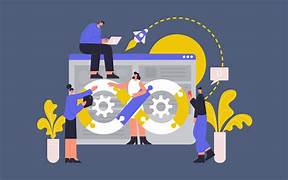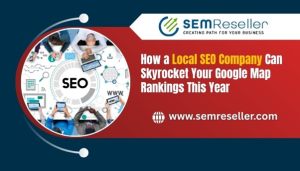Wired for Success: How Smart Tech Is Transforming Everyday Business

Businessperson managing cloud computing services and applications on laptop with virtual icons representing different cloud based solutions Concept of cloud computing
Technology progression continues influencing nearly every business in every industry. Ongoing digital transformations present companies both tremendous opportunities alongside substantial challenges. Organizations worldwide now race to adopt more advanced technical capabilities, hoping to increase competitiveness. Yet simply overlaying modern tech onto outdated ways rarely yields success. True transformation demands fusing emerging innovations onto strong foundations that uphold company fundamentals. Savvy leaders understand fresh technologies only sustainably thrive when ingrained into broader strategies and operations.
Automating Manual Business Processes
Many routine business tasks remain manual, even though they could easily be automated. Financial departments still shuffle invoices and expenses through email and paper approval chains. HR personnel manually update payroll systems rather than directly integrating hiring and shift data. Supply chain analysts also spend days assessing and re-keying inventory figures while distribution coordinators juggle logistics via phone and fax. Multiple reliable software solutions now exist to automate these business-critical yet labor-intensive activities. Streamlined workflows route information into proper systems to update records, trigger actions, and inform stakeholders. Automating these mundane yet necessary responsibilities allows concentrating talent on more impactful initiatives.
Securing Systems and Networks
Cyberattacks regularly compromise sensitive business data and systems. Yet, most companies still attempt to safeguard critical infrastructure using only traditional antivirus software and firewalls. These defensive measures are ineffective against increasingly complex threats. True security demands implementing modern frameworks to shield the entire digital attack surface. Multi-layered tools like endpoint detection, perimeter analysis, vulnerability testing and anti-phishing controls structurally harden environments. Strict access policies, strong encryption and automated threat intelligence also add protection. Regular security awareness training helps employees stay vigilant against attacks. Proactively securing the technology backbone through embedded structural safeguards better enables deflecting both external and internal threats.
Supporting Customers and Employees
Providing excellent technical support remains essential for sustaining both customer loyalty and employee productivity as technology permeates business. The folk over at Opkalla explain that structurally implementing specialized service desks staffed by skilled IT experts allows issues to be efficiently resolved, users to be trained and recurring problems needing attention to be identified. Knowledge and discussion forums similarly give customers and staff 24/7 self-help access to answers rather than remaining stuck awaiting assistance. Embedding user-friendly support resources directly within software interfaces via contextual help menus or interactive chatbots likewise improves convenience. Strong technical support weaved into standard operations improves solution reliability while visibly demonstrating commitment to stakeholder needs.
Optimizing Cloud Capabilities
Migrating technology to cloud platforms enables businesses to achieve more capabilities and flexibility at lower costs. However, simply transferring existing systems “as is” onto a cloud infrastructure rarely optimizes potential benefits. True optimization requires holistically incorporating cloud tenets into solution designs from the start rather than just hosting traditional applications at new data center locations. Automated server patching and security scanning reduces maintenance. Accessible APIs quicken tying new apps or data sources into infrastructure. Multi-cloud designs spreading systems across vendors further increase resilience and bargaining power. Cloud lifts limitations, but optimized advantages only come from infusing cloud principles throughout technical DNA.
Conclusion
This ongoing digital transformation era promises businesses greater speed, security and savings, but only with sufficient technology fluency guiding adoption. Outpacing competition now requires embedding smart technical capabilities deeply into company structures rather than just bolting onto old ways. Structurally wiring operations using intelligent software, trustworthy data and adaptive infrastructure lays the nervous system, transmitting market signals into actions faster than rivals. Leaders must shape company cultures, welcoming fresh innovations while upholding core values if technology transitions hope to stick. Companies resolving to intelligently rewire themselves gain advantage; technology hesitancy risks decline. However, with sound IT strategy and execution, the future looks bright even through disruption clouds.




